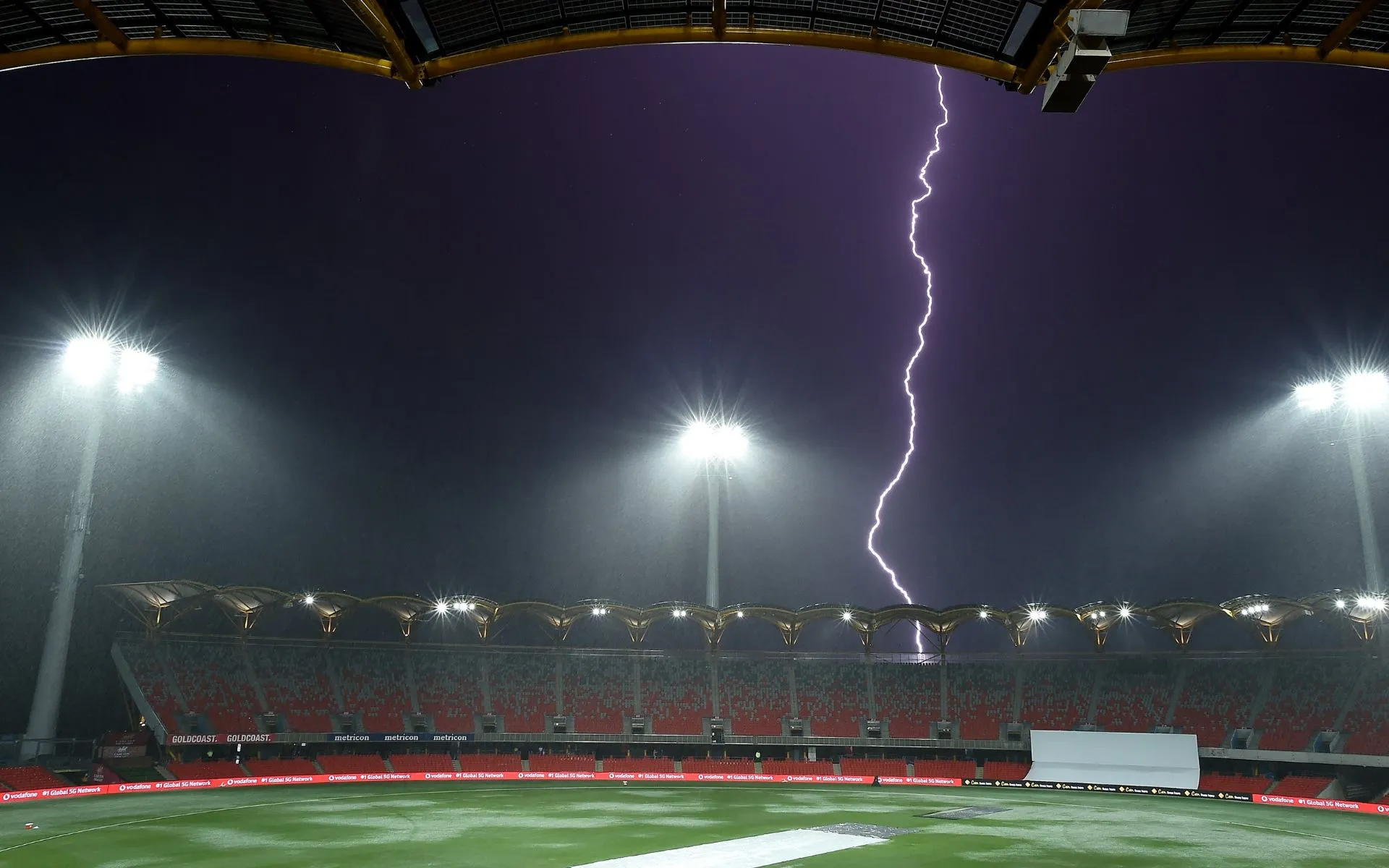 Lightning in Cricket- (Source:@Johns/X.com)
Lightning in Cricket- (Source:@Johns/X.com)
Day 5 of the third Test between India and Australia got off to an electrifying start quite literally. The visitors lost their last wicket in the first hour of the first session and as soon as Australian openers took the field, the umpires suspended play because of just lightning and no drop of rain.
Rain playing a spoilsport is quite common in cricket, but a play getting suspended because of a lightning flash is a rare phenomenon. But What is lightning and how does an on-field umpire decide when to call off the play?
30:30 Rule Explained By Simon Taufel
In the latest events, legendary umpire Simon Taufel explained a '30:30' rule in cricket which every ICC on-field umpire follows during a cricket match and that was the reason why the ongoing Gabba Test was halted.
"The ICC has had a lightning protocol in place for a number of years now, probably five to six years. It's a 30:30 rule. So when there's an imminent threat of lightning and the umpires see a flash of lightning if they hear a thunderclap within 30 seconds, that's the guideline for them to suspend play or not play at all," said Simon Taufel.
"In this particular case, with lightning so close, there is an imminent threat; and when they see a flash of lightning and a clap of thunder within 30 seconds, they will suspend and abandon play because it is about the safety of everyone, spectators included, ground staff and everyone at the ground," he added.
At the time of writing this article, the play is suspended because of a heavy downpour at the Gabba and play has been suspended resulting in a draw.
![[Watch] Little Indian Fan Gives Angry Send-Off To Travis Head As Siraj Takes Revenge In Gabba](https://onecricketnews.akamaized.net/parth-editor/oc-dashboard/news-images-prod/1734495772679_Young_KId_Travis_Head (2).jpg)
![[Watch] Cummins-Starc Leave The Field Frustrated As Bad Light Halts Match On Day 5](https://onecricketnews.akamaized.net/parth-editor/oc-dashboard/news-images-prod/1734497792497_pat_cummins_mitchell_starc (1).jpg)
.jpg?type=mq)


.jpg?type=mq)
